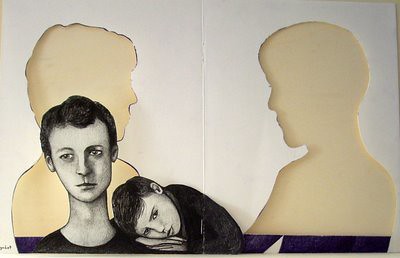




1. Explain what it is that you like about these 5 art works.
All the artists I was supposed to research had a lot of amazing pieces. However, I chose those five pieces because something about them caught my attention more than the other works. All of these paintings have some form of surrealism in it. I was surprised because most of the work I liked was mainly black and white except one. What I liked most about these pictures was that they focused mainly on one colour, which is what I would like to do with my pieces as well. I also like how the pieces fit well together as they portray different ideas in society. Glamour, sorrow, joy and loneliness. Every piece can be interpreted in many ways which I find very interesting as well. My favorite picture is the one titled “New Mothers” by Sally Mann as it portrays today’s culture and how the soul seems to have left the human body.
2. What is it that these elements are expressing?
The use of one particular colour is trying to invoke a certain type of feeling in us. Black and white are used to create a melancholic feeling towards the painting while the blue is trying to invoke a sense of calmness within us. The use of colours is minimum, though they are vivid. They way they use the colours manages to capture their subject very gracefully which is another quality that I like about these paintings.
3. How could you take some of these strategies and apply them to your own work—either in terms of media, formal qualities, and/or themes?
I really like the way these artists have focused on using one colour to portray a particular emotion, I want to try that with my work as well and see how it goes. I also like the compositions of my art pieces, as the subjects of the paintings have an aura about them that makes the viewer want to keep looking at them. The use of black and white has made me realize that black and white has shown that these two clours are capable of capturing a wide variety of emotions depending on the shades. I might be interested in working with that as well.
4. Choose one artist and research what has influenced his or her work. I f the artist is alive and has a website you should look at what they’ve written about their work. If the artist is not contemporary, then research what others have written about this artist.
The artist I chose to research was Sally Mann as I believe that her work is most inspiring and deals with a variety of subjects. She tends to give a twist to whatever she works on. The composition of her photographs are mainly dark. She uses dark humor to portray pressing issues of the moment. The piece I have chosen is one of her early works, which portrays one of today’s pressing issues teenage pregnancy. She has had two documentaries made about her, Blood Ties, in 1994 and What Remains in 2007. Moreover she is a talented woman and has also written many books the latest one being Immediate Family which she is writing to clear the air about her artwork which most people find disturbing.












































